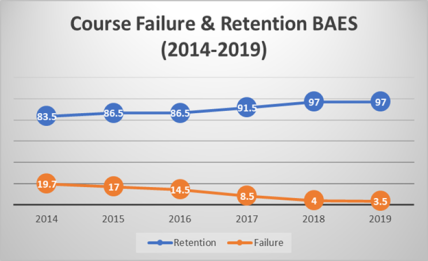
KEY 3 – Provide Tools to Accommodate
Set Them Up For Success
Before students arrive, the online instructor should build as many accommodations and supports into the culture of their instruction and the components of the courseroom as possible. These supports create a student-centered approach to instruction that proactively addresses the diverse needs of every learner. For example, exemplary examples of assignments, regular videos from instructors with tips on the week’s tasks, procedures to quickly access and communicate with instructors (email, text, zoom office hours, closed social media groups, etc.), relaxed deadlines, and “I not F” which is the ability to redo assignments for mastery, are all supports that promote and encourage students to become self-confident, self-directed, and proactive (The Education Alliance Brown University, n.d.).
These things are no secret to most educators. In fact, best practices in education taught us to apply these methods and techniques and interventions, after an issue or difficulty has been identified. Research that I have conducted and data captured over the past five years suggest that a cognitive shift from the traditional is in order.
Instead of implementing these research proven high-impact techniques as reactionary interventions, build them into the culture of your instructional delivery in a proactive manner so that students can access and benefit from them before an issue or concern with their academic progress occurs. I don't know about you but I'd rather fix a problem before it happens than deal with the ripple effect of issues it creates after it has already taken place.
Miller, N. (2019). Education Studies Programs, University of Arizona Global Campus
Skip to the Good Stuff
My wife is shorter than me and we have several cabinets in our kitchen where the top shelves are too high for her to reach. Usually, she just asks me to reach up and get the item that she desires. Feeling useful, I happily obliged her request. But one time when she needed something I was out of town for a few days so she went to Walmart and for a very inexpensive stepping stool. She was able to use it to increase her reach and get the items that she wanted. From that day forward she no longer needed me to get items from the top shelves, the stall became her tool to help her get those things on her own. Sadly, I had to find other ways to make myself useful… LOL. But the greater win is that since she no longer had to wait for me to reach things for her she was able to move in ways that were more efficient and suitable for her schedule and things that she needed to get done.
My point is that just like that stepping stool wasn't told to help my wife obtain items that were previously out of her reach, accommodations are simply tools that help learners accomplish the task with which they are challenged.
They clear the way so instructors (online and face-to-face) can provide feedback to students beyond the basic processes of rote memory and understanding of simple concepts. When educators provide accommodations as tools that provide equitable access to mastery of the content being taught, they can skip past the questions that register on the lower levels of the Bloom’s Taxonomy scale and facilitate meaningful discussions that stimulate critical thinking and problem-solving. Proactive integration of accommodations into the instructional delivery process is a major step toward establishing a CRCS. That integration allows you to skip to the good stuff, it catapults conversations directly into the analysis, evaluation and synthesis arenas of higher order thinking as students relate new content to past experiences that align to individual or group cultural schema.
Adjusts to Cultural needs
Keep in mind our learners come from very diverse backgrounds. They have a plethora of experiences and influences of which we are not aware, they usually have a number of variables external to the classroom competing for their time and impacting their decisions. Thus, the tools that you have proactively included in your course design and instructional delivery serve as accommodations to help our students compensate for all of those factors that are clearly outside of the scope of authority that we have as educators.
This is the highest level of creating a Culturally Responsive Classroom System (CRCS) that removes all barriers that hinder equitable access of mastery of the content you are teaching.
Thus, contrary to beliefs popular with less progressive educators, adjusting to meet the academic, social, and emotional cultural needs of the diverse groups of students in an online classroom does not lower rigor and relevance, in fact, it increases it.


